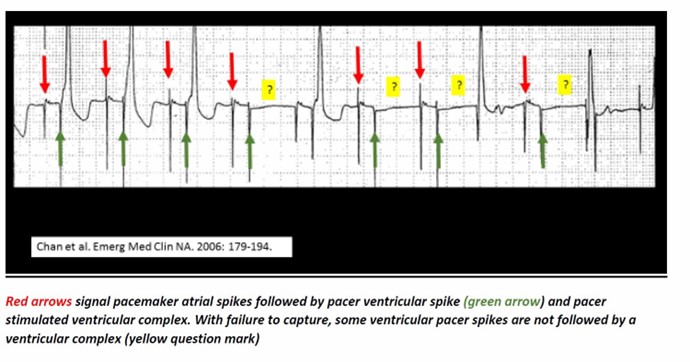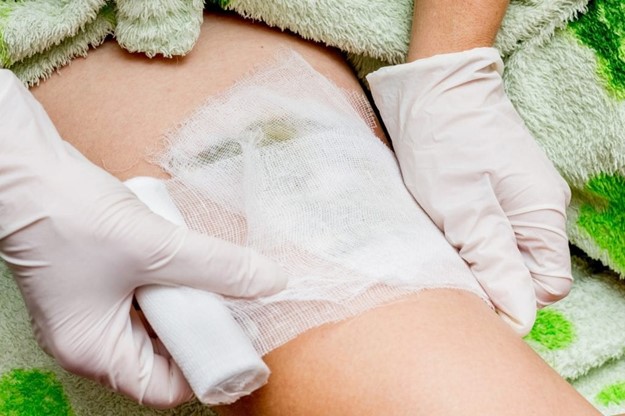A nurse is monitoring a client's heart rhythm following the insertion of a permanent pacemaker.
Which of the following images should the nurse expect?
A regular sinus rhythm.
A chaotic, irregular rhythm.
Absence of any electrical activity.
A series of spikes followed by a QRS complex.
The Correct Answer is D

A pacemaker sends electrical signals to the heart to regulate the heartbeat.
On an electrocardiogram (ECG), these signals appear as small spikes followed by a QRS complex, which represents the contraction of the ventricles.
Choice A, A regular sinus rhythm, is not the correct answer because a regular sinus rhythm is a normal heart rhythm that originates from the sinoatrial (SA) node and does not involve a pacemaker.
Choice B, A chaotic, irregular rhythm, is not the correct answer because a pacemaker is designed to regulate the heartbeat and prevent chaotic or irregular rhythms.
Choice C, the Absence of any electrical activity, is not the correct answer because a pacemaker sends electrical signals to the heart to regulate its activity.
Nursing Test Bank
Naxlex Comprehensive Predictor Exams
Related Questions
Correct Answer is D
Explanation
Initiate a referral for the client to a home health agency.
This action demonstrates client advocacy because it empowers the client to continue self-care at home while also providing them with additional support and resources through the home health agency.
Choice A is wrong because avoiding large crowds of people is a precautionary measure but does not demonstrate client advocacy.
Choice B is wrong because avoiding raw vegetables is a dietary recommendation but does not demonstrate client advocacy.
Choice C is wrong because reminding the client of the importance of medication adherence is important but does not demonstrate client advocacy.
Correct Answer is D
Explanation
The nurse should apply new gloves when alternating between wound care sites.

This is to prevent cross-contamination and infection.
Choice A, cleaning the equipment in the client’s room once per week, is not an answer because it is not mentioned in the search results as an intervention for a client with full-thickness burns on the lower extremities.
Choice B, providing a diet of fresh fruits and vegetables for the client, is not an answer because it is not mentioned in the search results as an intervention for a client with full-thickness burns on the lower extremities.
Choice C, limiting visitation time for the client’s children to 40 min per day, is not an answer because it is not mentioned in the search results as an intervention for a client with full-thickness burns on the lower extremities.
Whether you are a student looking to ace your exams or a practicing nurse seeking to enhance your expertise , our nursing education contents will empower you with the confidence and competence to make a difference in the lives of patients and become a respected leader in the healthcare field.
Visit Naxlex, invest in your future and unlock endless possibilities with our unparalleled nursing education contents today
Report Wrong Answer on the Current Question
Do you disagree with the answer? If yes, what is your expected answer? Explain.
Kindly be descriptive with the issue you are facing.
